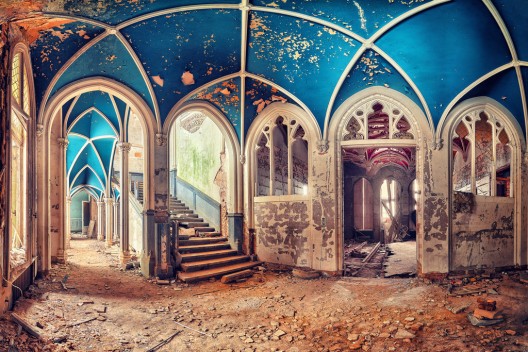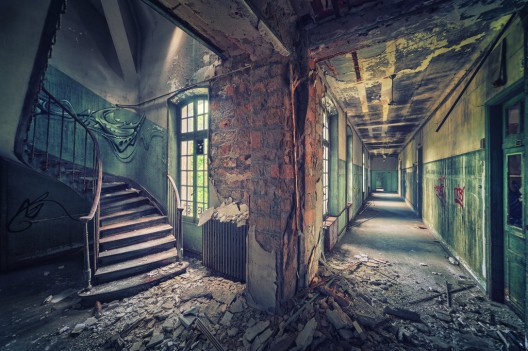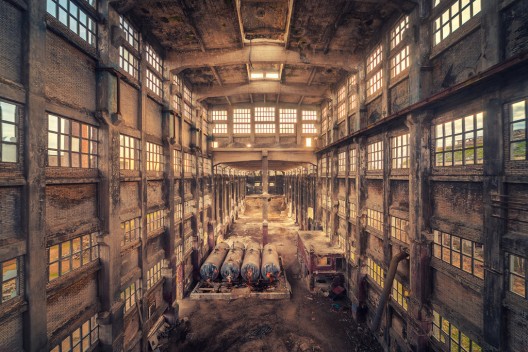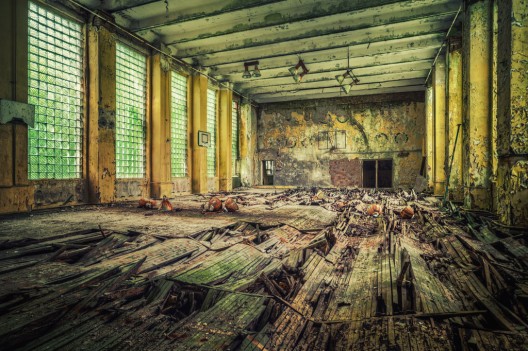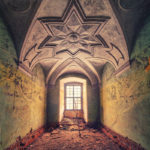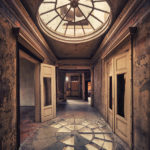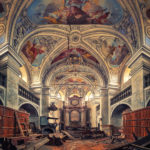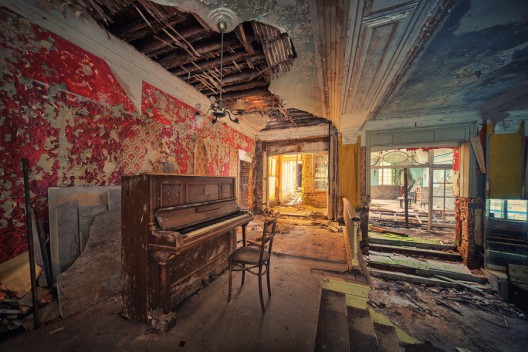Art & Architecture: Decay / Matthias Haker
These walls speak. People lived here. They cried and laughed here. And, there were feasts, balls, kisses, nightmares and sorrow there. Great stories and small, everyday moments buried under the weight of extinction, under the shadows of decay.
A sort of apocalyptic scent dances with the fallen leaves that gather into piles against the walls and between the winding staircases. Something both scary and attractive drives you towards a scenery in twilight, into the architecture’s agony.
But these are not ruins. Not just a bunch of stones proudly displayed in the middle of a square, surrounded by a mob of tourists, cameras in hand. Their erosion is not covered by the make-up of restorations, like an old lady still trying to be young, running from the inexorable passage of time.
These buildings aren’t dressed in vanity, but hide their secrets in shadows. But there is beauty to be found in their abandonment, an intimate beauty revealed by the German photographer Matthias Haker, who fights for the preservation of their slow-paced decay, capturing it in his photography and keeping the location of such architectural Venuses a secret.
Matthias Haker is a Media and IT student currently based in Dresden, Germany. He fell in love with photography in 2008, a love that led him to wander the world in pursuit of its beauty, as have so many others. But Haker has an unusual vision. Magical. And it’s shown in his work Decay.
- Absence plays the leading role in his photography, invading old sceneries that become new again. Places beyond abandonment, devastated. With stories deeply connected to the events that took place there.
“Abandonment as abundance. The moral conscience of a world in ruins reveals a possibility of abundance through its osmosis with nature. Ruin as the peak of architecture. Ruin as submerged time. Ruin as a flower. Ruin as endurance. The limestone, the scrapping, the worn out, the oxidized, and the flaking off, along with their corresponding theorems. Ruin as underground architecture. This is what happened, here it was, and here is where they dwelled with all their impossible related. Ruin exposes the futility of every endeavour and the beauty of this futility. The beauty of being. Nature’s assault on the ruins. The creation of a democracy from the lights of the intersection between architecture and the kingdom of leaves. Home returns to nature. And thus ruin is ruin no more, as it is once again nature.” [Poem of slowness: Andres Ibañez].
Light slowly floods these places, creating a thick atmosphere bouncing off these floors covered with waste and vegetation, mould and waste. The image is enhanced by a digital edition that brings the details to the forefront, highlighting every particle of every flaw. The lightening of the shadows, the darkening of the light. The image turns into something flat and unreal, almost becoming a painting, spread across a textured canvas, trying to imitate reality.
Contrasting this, the portrayed image usually looks for a depth of field: rooms with long corridors with a light at the end that catches the eye. Like the light we see at the end of the tunnel, just as we are about to die; before the place dies, before the ruins finally collapse over us.
Loneliness. Spaces bathed in light that project no shadows, like a ghost whose image isn’t reflected in a mirror and whose shadow doesn’t darken the floor as he walks. Only the light radiates: engraved in the dust that floats in the air, like straight lines coming in from the windows, the only contact with the world out there.
Only light can restore the colours stolen from these walls which have been given over to darkness, filling the space with new life, triggering pigments in a pictorial photography that let us ponder who lived there; who laughed, or who cried.
Text: Ana Asensio Rodríguez / Translated by: Jacinto Castillo & Jennifer Hutchinson Photography: Matthias Haker / Originally written for Plataforma Arquitectura / Citation: Asensio, Ana. “Arte y Arquitectura: Decay / Matthias Haker” 16 Jun 2013


